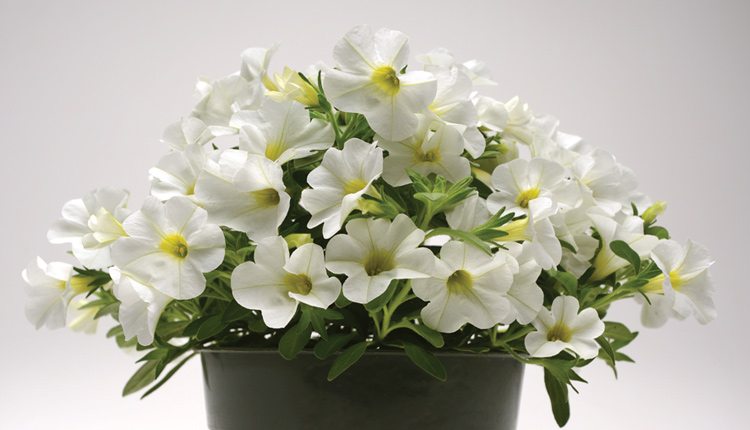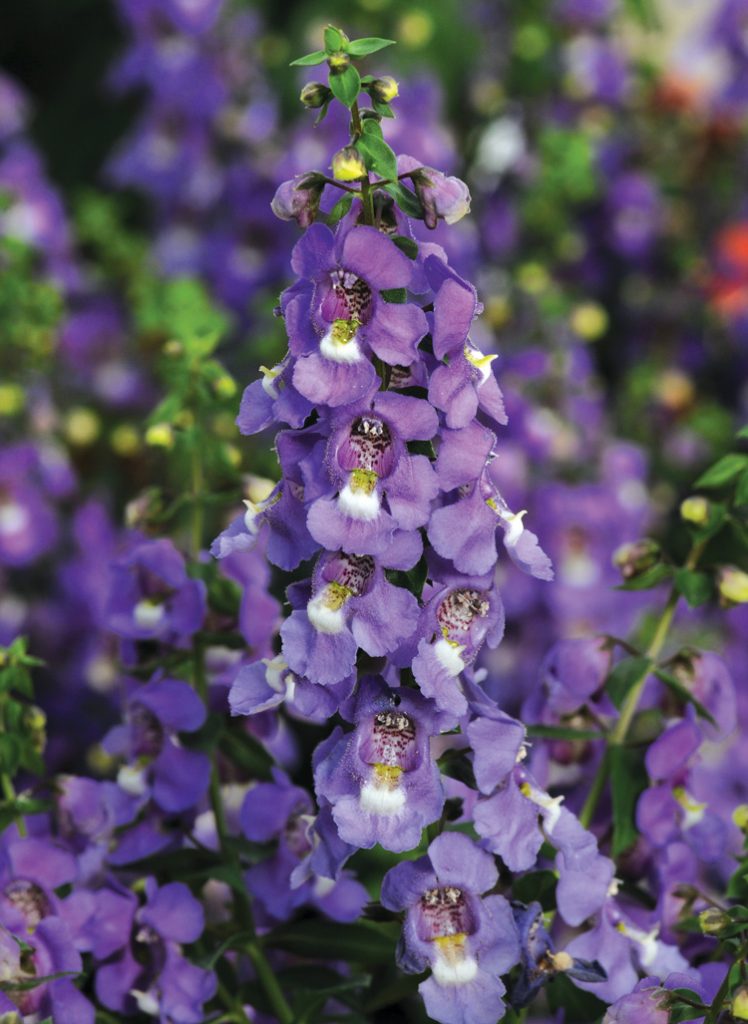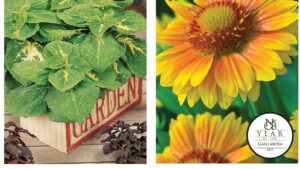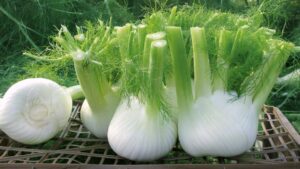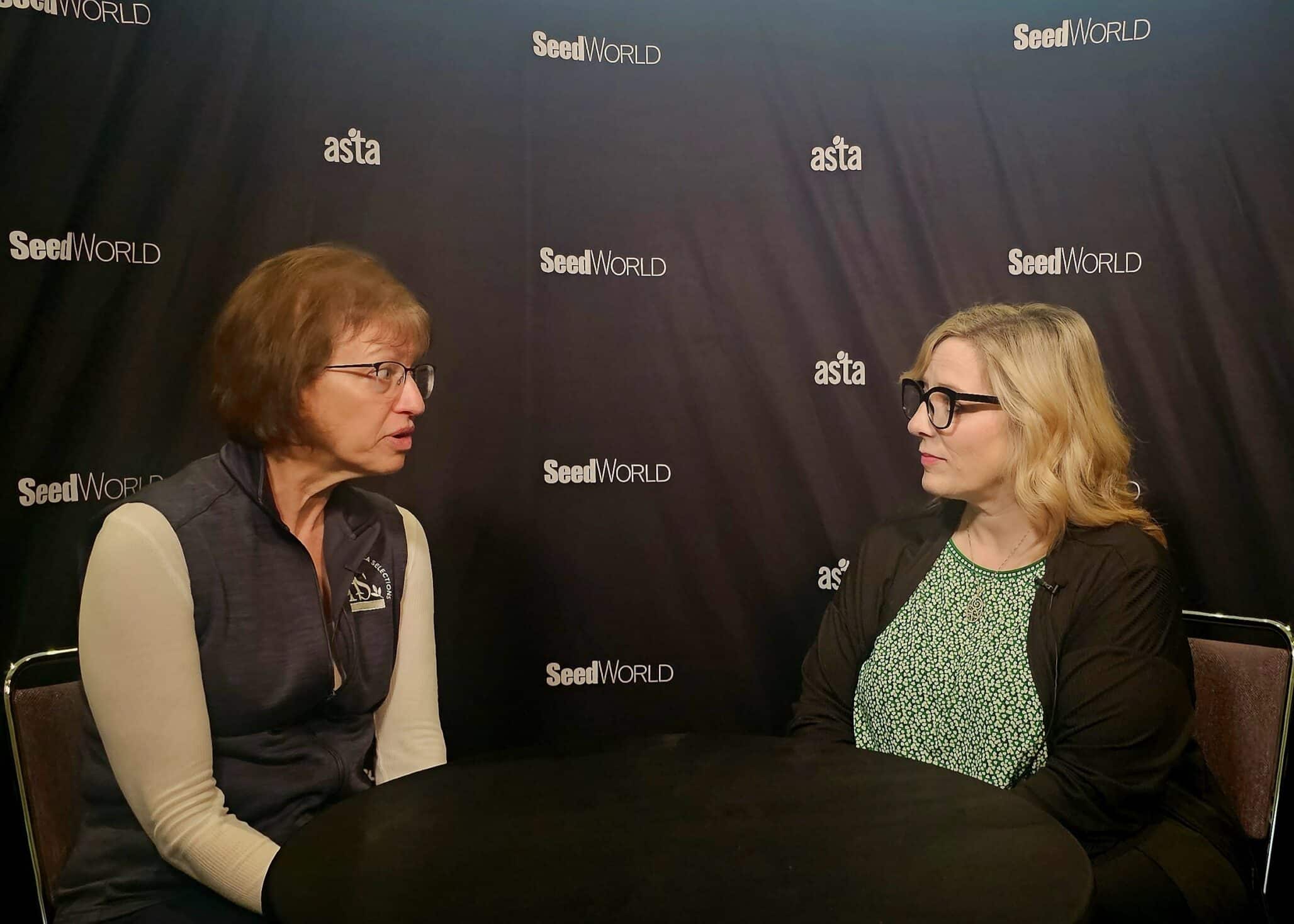Benefits of seeds over cuttings proves attractive to growers.
Some plants long sold only vegetatively are starting to show up in the market in seed form, something seed companies believe is worth the investment for themselves and growers.
Kabloom Calibrachoa, Glitz Euphorbia and Serena Angelonia from Pan American Seed and Canna F1 South Pacific Scarlet from American Takii were recently released as seeds. The hope for companies like these to invest in seeds versus cuttings, tissue culture or bulbs is that the products will be versatile and inexpensive enough to draw interest from growers.
“Vegetatively, it’s easier to bring something to market. It’s less time because you don’t have to wait for seeding,” says Diane Blazek, executive director of All-America Selections and executive director of the National Garden Bureau. “But propagating something from seed is a much lower input cost for growers.”
That’s key, she says, because almost every cost for growers has increased – some of them significantly – in recent years, including labor, chemical and energy costs. According to the U.S. Energy Information Administration, the cost of electricity rose from 6.82 cents per kilowatt hour in 2000 to 10.45 cents in 2014, an increase of about 53 percent.
“But if you look at the prices of bedding plants or potting plants, they have not gone up or kept up with inflation,” Blazek says.
Cost Control
For a home gardener, a few dollars for a flat of flowers isn’t necessarily going to make or break their purchasing decisions, but for the grower, a few cents per plant can be significant.
Mike Huggett, eastern sales manager for American Takii, says tissue cultures and bulbs for the types of plants he works with can be as much as 75 cents to $1.25 each. He estimates that is about three to five times more than comparable seeds.
“It’s significant enough that growers are looking for alternatives to the vegetative types,” Huggett says. “If they’re going with baskets, they can cut costs significantly going to seeds from vegetative.”
The benefit for the seed company is also apparent. Huggett says the companies can harvest far more seeds from each plant than cuttings, cultures or bulbs, which helps drive down costs that are passed on to growers.
“The seed is a clear advantage,” he says.
Scott Rusch, a product group director for PanAmerican Seed, says he sees situations in which seeds can be the significantly less expensive option, but he also sees that some seeds are almost identical in price. He says that can be deceiving, however, because many vegetatively propagated plants come with breeder royalties that make the end price higher.
He also reminds growers that seeds allow for automation in greenhouses. Instead of hand-sowing a cutting, machines may be able to sow seeds, driving down prices for growers.
“Seed is infinitely easier to deal with,” Rusch says.
Inventory Control
When a shipment of cuttings gets to a grower, it’s time to act. Those cuttings need to get into a growing medium quickly. If not, rooting success and shoot growth can be affected.
“In seed production, you can hold seeds for a long period of time. With cuttings or tissue culture, there is zero shelf life – none,” Huggett says.
Rusch says when he talks to clients, he compares cuttings to bags of lettuce at the grocery store.
“It’s good for the first couple of days when you get it off the shelf, but by the end of the week, it’s a little limp and not at its best,” Rusch says.
That can be a real concern if shipments are delayed. A few days or a week could have a significant impact on how well a shipment of cuttings performs in the greenhouse, and that carries over to profits for growers.
Besides late shipments, it’s also possible that a package of cuttings sitting on a delivery truck or on the floor of a warehouse could freeze. Since the consumer demand for greenhouse plants is in March to May, most cuttings are shipped from December to February to give growers time to get them ready for spring.
“You expect to lose a certain percentage in shipping,” Rusch says. “It’s something that growers have come to expect, but it’s never easy when it happens to you.”
A frozen set of cuttings is useless, Rusch says, but a packet of seeds can withstand a few chilly days in transit. And growers can reduce risk further by ordering seeds ahead of time knowing they can sit on a shelf until it’s time to get them going.
“They have inventory on site and ready when they want to sow rather than worrying about their cuttings coming in frozen or in a delayed shipment,” Rusch says. “It offers ease of selling and inventory control for the growers. It puts them really in control of their own destiny.”
Disease Issues
Another advantage for seeds over cuttings comes with disease issues. It’s far less likely, Huggett says, to spread disease through a greenhouse via seeds than it is via cuttings or bulbs.
He says he knows of cases where entire greenhouses were wiped out because infected plants were introduced through cuttings. It could be as simple as tainted water used to grow the mother stock, or a dirty knife used to harvest from that stock.
“Those can carry on into the cuttings,” Huggett says. “The seed product you have is also the cleanest form you can get.”
Downey mildew issues with impatiens in recent years caused significant losses for growers, both because they lost inventory, but also because consumers heard about the problems and demand for the products dropped.
Blazek says growers have to realize that even as they and the industry do better at keeping products disease-free, one outbreak can significantly impact business.
“We’re seeing less disease, but we’re probably hearing about this more because of the amount of information at our fingertips via the internet,” Blazek says.
Choose Wisely
Despite all the advantages seeds can have over vegetative propagation, seed companies that are looking to develop a new line of seeds should choose the type of plant carefully.
Rusch says it can take five to seven years to create a market-ready line of seeds, while Huggett says it can take as many as 10 years in some cases. Breeding plants that can be sold as cuttings can take as little as a couple years.
“The vegetative companies can breed quite quickly,” Huggett says.
Huggett says many seed companies are working with big box retailers like Home Depot and Lowes, which are taking a large share of the bedding, potted and other plant market, and they’re are always looking for new and trendy things that will catch their customers’ eyes. He says there has been a “constant wave of new products.”
That means a plant that is popular today might not have a corner on the market in a decade. And a company that wants to make seeds for a popular plant now available as a cutting should choose one that has some staying power.
“Make sure it’s not going to go out of fashion before it gets to the market,” Huggett says.


